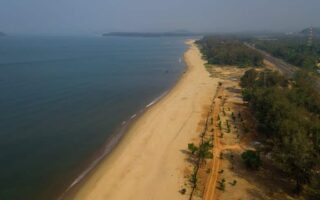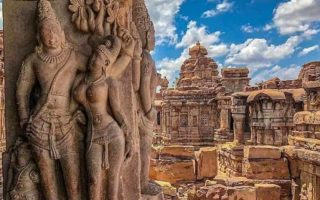Karnataka’s monuments provide a bounty to sightseers and devotees of the past. The monuments take the visitors to the magnificence and splendor of a former period. At present visitor’s stop over appeal, at these artistic monuments in the state of Karnataka which were constructed to serve precise point. If the citadel were constructed to be protected from the prowling opponents, the beautiful and majestic palaces were signs of the lavishness of the imperial folks.
The monuments of Karnataka have generated tourism business in their individual places. Tourists come from far-away places to witness their structural design and to explore into the bequests of the primeval realms. If a visit to this state is planned, do not miss Karnataka’s monuments. Trust me the alluring beauty of these monuments will force you to visit this place over and over.
Bangalore Palace
- Situated: Bangalore City, Karnataka, India.
- Famous As: Technological City or the IT hub.
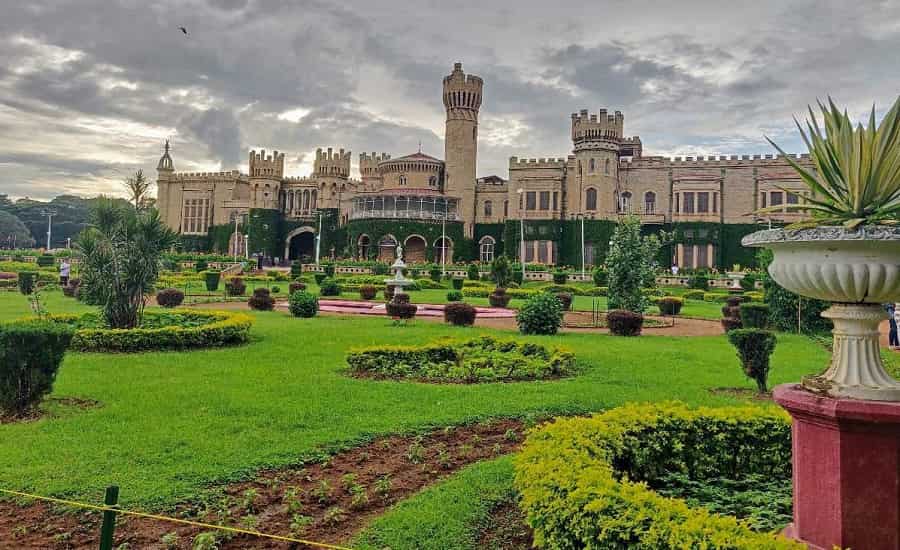
Bangalore is Karnataka’s capital since the year 1956 and is also the leading city of Karnataka and 3rd most crowded city in India. Bangalore has a main decree in tourism of Karnataka. Bangalore is also popular as Bengaluru or Karnataka’s official capital. Kempe Gowda constructed the modern Bangalore. The city derived its name in primitive times from ‘Benda Kaluru’. It is also well known as India’s Silicon Valley since the city is renowned for IT, hardware and software. Approximately more than thousands of people work in IT here. This city is the cost-effectively urbanized city, and this is the midpoint of India’s software. High court, Vidhana Soudha, The Bangalore Palace & Fort, Lal Bagh, Karnataka High Court, ISKCON, International Technological Park, Brigade Road, Bannerghatta Biological Park, Nandi Hills, The Bull Temple, Cubbon Park, Bangalore’s Oldest Church, Ulsoor Lake and Tipu’s Palace are the main drawing cards of Bangalore city.
For the enjoyment of the people there is an arrangement of various amusement parks and theme parks. The High Court, Attara Kacheri, Museum buildings and Central College were constructed in the European style and this was when there was the introduction of English education in Bangalore. The Churches that have an existence in Bangalore are all constructed in European style. Bangaluru is an abode to the profound industries, aerospace, software companies, defence organizations and telecommunications. Bangalore’s wealth is $100 billion which is a chief centre of economy of India. There are big stages in Bangalore for Tourism. Bangalore is the most sightseer curiosity centre in Karnataka with several day-trip places in the city. The ISKCON temple is the drawing card and gorgeous atmosphere for the tourists and devotees. Parks and Lakes are the ordinary pull in Bangalore city.
History
The natural cave of Gavipura holy place of Gangadhara constructed during the Ganga cycle came to be sustained from side to side the Vijayanagara cycle and the colossal Basava in Basavanagudi was imprinted by the family tree and approved it as Jagir to Shahji, Shivaji’s father. Shahji and his son Ekoji had control over Bangalore from 1687. He constructed the shrine of Venkataramana and a superfluous fort near the old fort. Bangalore that urbanized as a making centre and money- manufacturing beneath the Kempegowda family tree and the Marathas, was a supplementary urban by Chikkadevaraya as he received weavers from Baramahal (Tamilnadu) vicinity to come about and reconcile downhill of Bangalore. Presently Bangalore was approved as Jagir to Haider and as he arrogated power from the Wodeyars, he reinforced the additional fort with blocks of granite. Another best thing to visit Bangalore city is the International Technological Park.
Mysore Palace
- Location: Mysore City, Karnataka, India.
- Comprises of: Many posh and architecturally carved miniatures, paintings, rooms, artifacts etc.
- Entry fees: For all 15 Rs.
- Lightings: On Sundays, National Holidays and Dasera.
- Best Time to Visit: At the time of Dasera as it will be a real pleasure to your eyes.
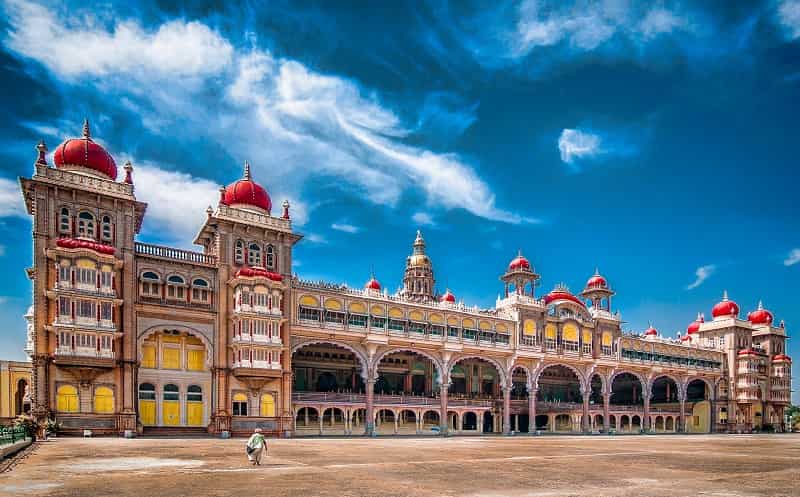
Mysore City is popularly known as the (city of palaces), but the finest splendid structure amongst them is the Mysore Palace also called as the Main Palace. One of the memorable imageries of the metropolis is the picture of the enlightened Mysore Palace alongside the murky black skies. It acquires 97,000 light tubers to generate this enthralling picture of the mansion. The grand Mysore citadel is located in the heart of Mysore city. This structure is a classic example of the magnificence of a former period and is at the moment a priceless national wealth.
History
Mysore Palace, which stands now, is the 4th Palace to be constructed in the similar place. When the major capital was budged back from Srirangapatna to Mysore, subsequent to the death of Maharaja Tipu Sultan, the splendid Palace was quickly reconstructed with mud and wood, in a Hindustani fashion. The regal folk’s locomoted into it by the year 1801. However, this fortress was blistered down in the fire, which busted out during the marriage of the former offspring of Raja Chamaraja Wodeyar in the year 1897. Rebuilding of this huge Palace was embarked on instantly, the majestic family locomoted to the Jaganmohan Palace. A Popular English planner Henry Irwin planned the new-fangled citadel, and this was finished in the year 1912.The total estimated cost to reconstruct this palace was Forty-One lakhs.
Structure
This massive structure of the Mysore palace is also called as Amba Vilas Palace. The architectural style of this structure is very unique as it is the amalgamation of Roman, Indo Saracenic, Dravidian and Oriental style of design. The Rajas citadel is a gorgeous 3 storeyed marble building of superior gray brickwork and the domes which are in royal pink marble, contrasting to this construction is a 5 storeyed One Hundred and Forty Five ft pillar whose magnificent domes are covered with gold. As you enter this grand Palace via Dolls Pavilion also called as Gombe Thotti. You will have a spectacular experience in viewing the collection of the 19th and 20th century traditional dolls that are kept for display. The royal wooden elephant is also placed in this place; the main feature of this Elephant is made up of eighty-four kg gold.
You will find seven canons in front of the Doll Pavilion or Gombe Thotti. These seven canons are still used to commence the start and the end of the fiesta of Dasara annually. As you walk further you come across the Elephant Gate that serves as the main gate to the heart of this splendid palace. The marriage pavilion or Kalyana Mantapa has one inner equiangular gabled top, which is enclosed with tainted glass. The following structure is placed in the southern direction of the palace. The flooring of (Kalyana Mantapa) has a stunning pattern of geometry that are created because of the dazzling tiles specially bought from Britain. Diwan-e-Khas also called, as Ambavilasa is a type of discussion hall, which was formerly used for discussions by the ruler.
Diwan-e-Khaas as the name denotes is really a Khaas chamber that holds the key position. Diwan- e- khaas is placed on the 1st floor that faces towards the east. Diwan-e-Aam, the chamber for the junta or the common masses is also placed on the 1st floor towards the south. The Mysore Palace has many breathtaking beautiful rooms like royal armoury, portrait gallery, collections of jewellery and costumes graceful chandeliers, ornamental frescoes, encarved doors of plush solid silver and mahogany, tainted, glass ceilings. During Dasara, the imperial throne made out of Two Hundred kilograms of gold is exhibited. It is said that the lineage of the family can be delineated back to the era of the Pandavas. The most important aspect about the paintings is that the Dasara fiesta is encarved in such a way in the palace that in whichever position or sides you are placed it seems that the procession is coming towards you.
Mysore Palace abodes 12 places of worships within. The most striking features about the places of worship are that they belong to the 14th-20th century and each showcases different architectural styles. The Mysore palace is bordered with pasteurized gardens that add on beauty. The palace is worth a visit to have a look at the functional splendid architecture of the Imperial Mysore palace.
- Timings: Every Day (From 10.00 am-5.30pm).
- Sundays and National holidays: From (10.00 am -8.00 pm).
And on the eve of Dasera this palace looks like a paradise especially illuminating for the fiesta.
Bull Temple
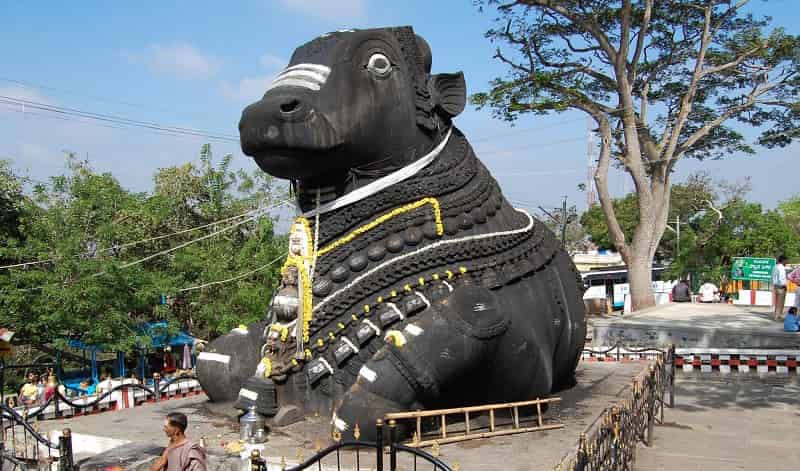
Situated in the region of Basavanagudi, Bangalore, this place of worship is one of the well-known milestones of Bangalore City. The forename Basavanagudi factually translates to denote “The place of worship of Bull”. Devoted to Nandi Bail, the devotee or the das of God Shiva. The Bull place of worship was constructed in the sixteenth century by Mr. Kempe Gowda.
Badami Caves
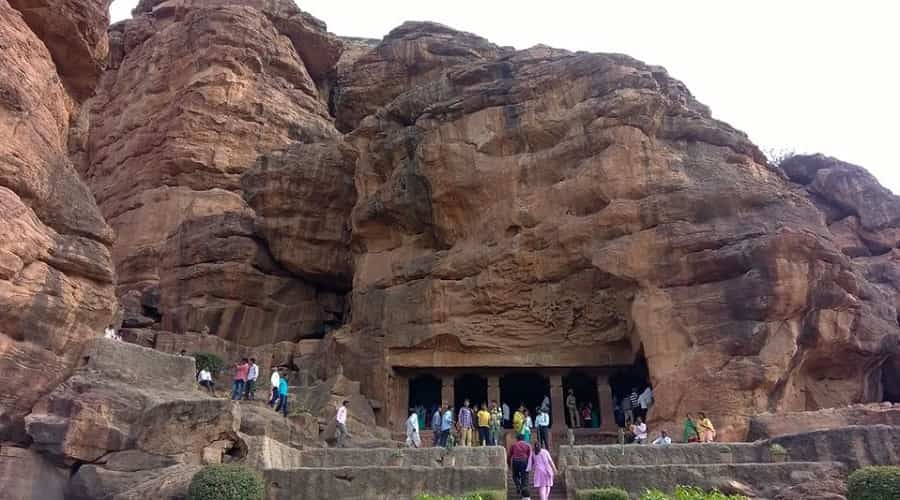
Situated on an undulating rise atop a trip of approximately two hundred steps, Badami Cave place of worship compound has four primeval rock-cut caverns. Of the four places of worships, three of them are Brahmanical shrines while the 4th one is belongs to Jain caste.
Bidar Fort
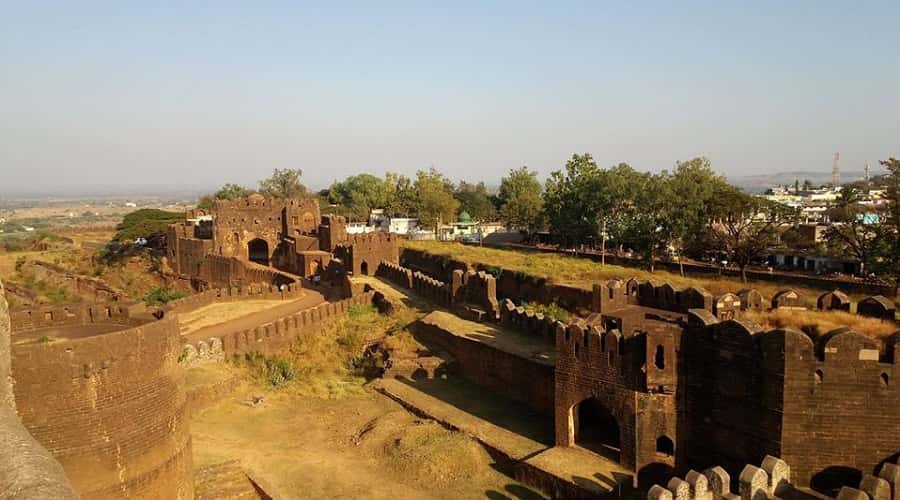
Initially constructed in the eighth century, renovated and strengthened, in the year 1428 by a Sultan named Ahmad Shah Bahamani. This fort swanks of a ruling existence in the landscape of Bidar.
Belgaum Fort
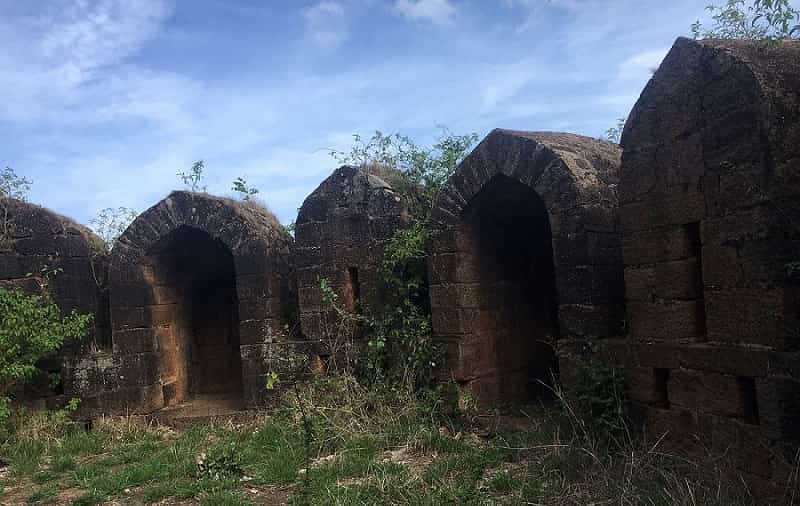
Belgaum fortress is the main visitors pull over in the area of Belgaum. This place was feinted by many empires and, the fort has experienced many rulers and transformation throughout its survival.
Gol Gumbaz
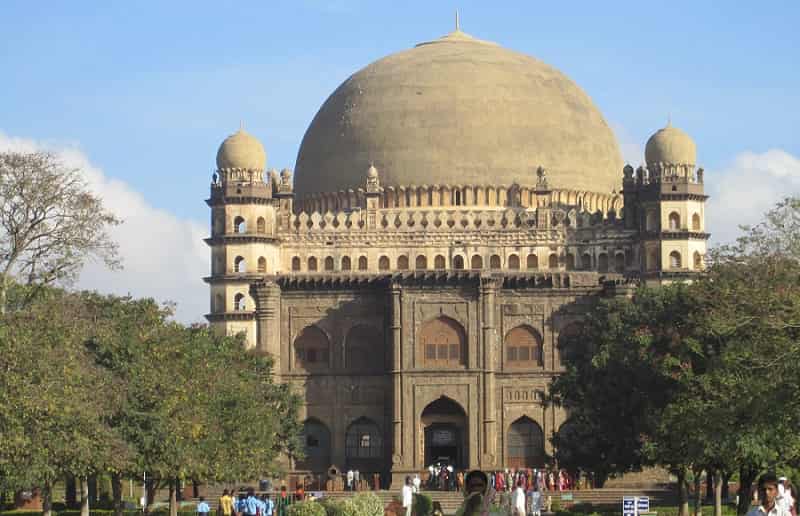
Gol Gumbaz, the popular mausoleum or the burial chamber of the 7th ruler Muhammad Adil Shah 1627 -56, of the dynasty of Adil Shahi. An excellent example of the Adil Shahi dynasty structural design, this huge crypt is a prevailing milestone of Bijapur.
Gulbarga Fort
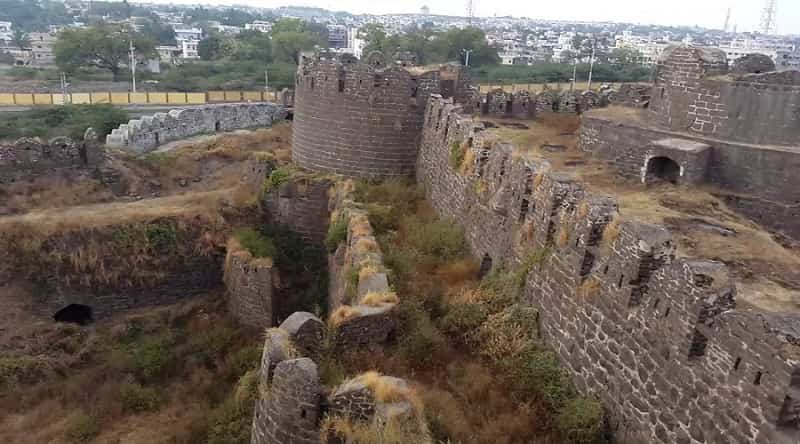
Massive Gulbarga fortress is one of the former instances of the exquisite Islamic architecture. The fashion of Islamic architecture was brought by Bahmani Sultanate in the state of Karnataka. The fortress was at first constructed by Maharaja Gulchand, siege of Warangal Kakatiya.
Hampi Ruins
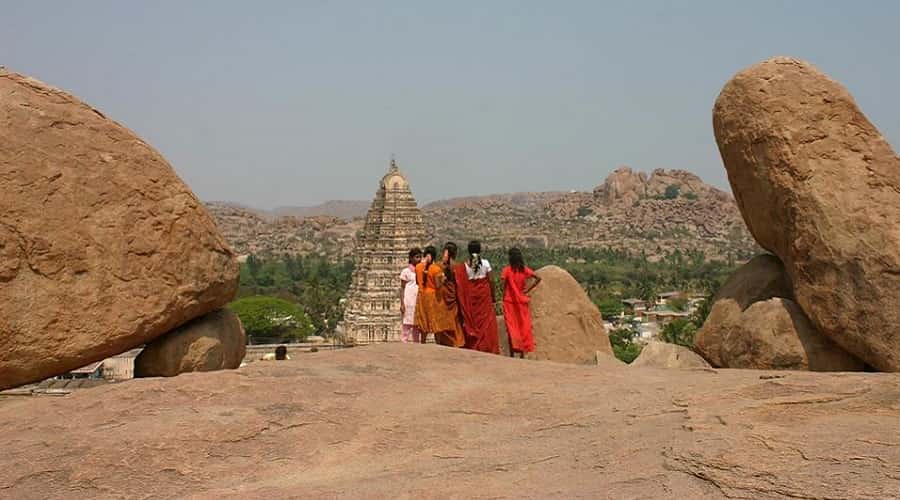
This place was at a time, the major point for the superior Vijayanagara Empire. At present only ruins of forts and palaces are left. This city was discovered by Bukka and Harihara in the year 1336.Earlier this city was filled with markets, stables, baths, sacred place of worships, magnificent palaces, pavilions etc.
Lord Bahubali, Shravanabelagola
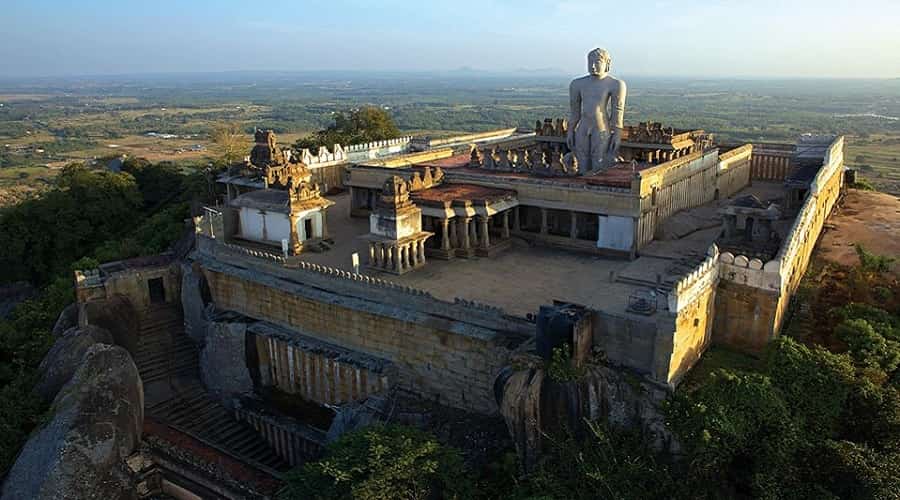
One of the sacred Jain pilgrimage site, Shravanabelagola is identical with the massive monolithic figurine of Jain holy person known as Lord Gomateshwara. This temple of Shravanabelagola holds an important arena in Jainism inheritance of this state, and also as the Mauryan dynasty’s founder Chandragupta became the follower of Jainism in the same place. Chandragupta died at a near by place known as Chandragiri.
- Must Read: Top 9 Heritage sites in Karnataka

